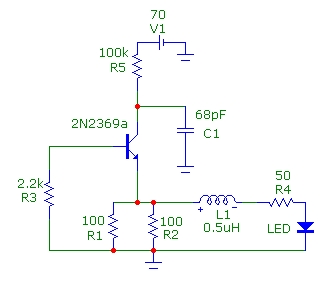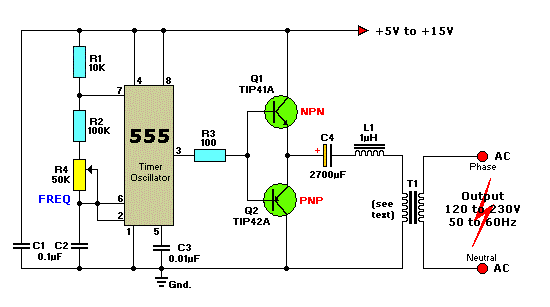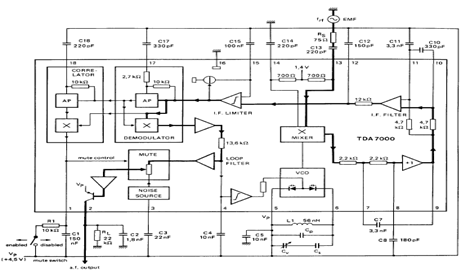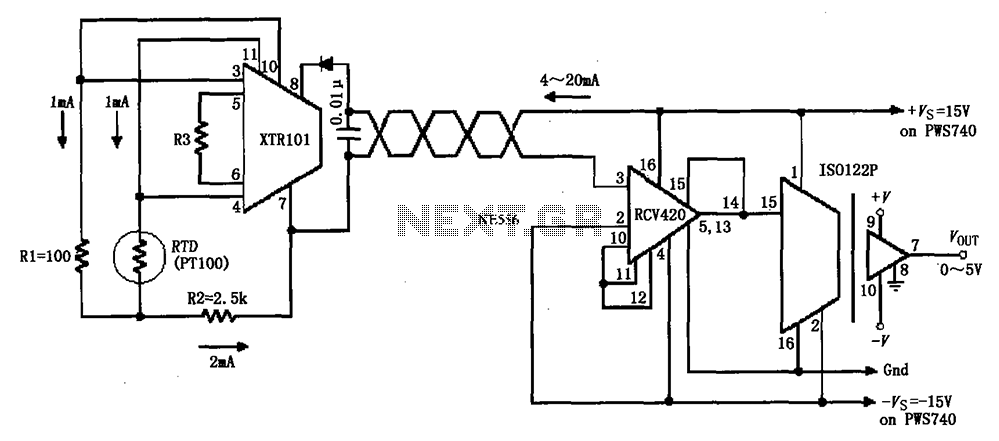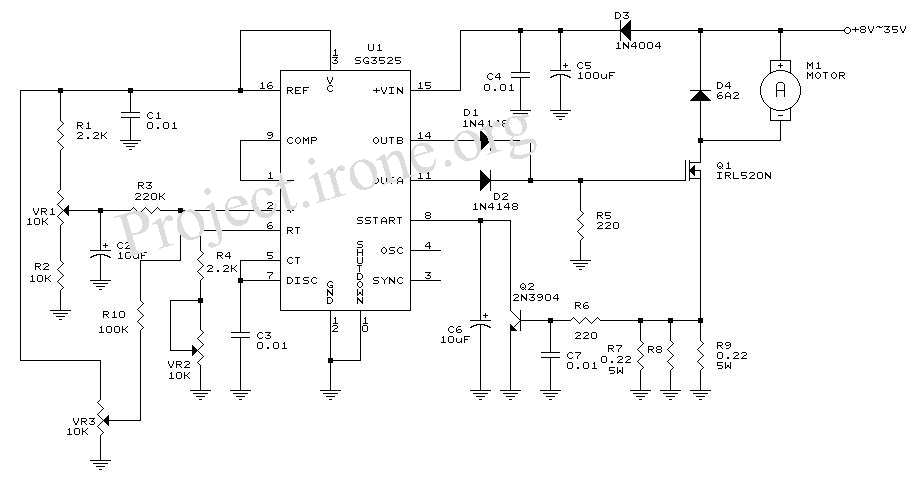
Saw Transmitter Circuit
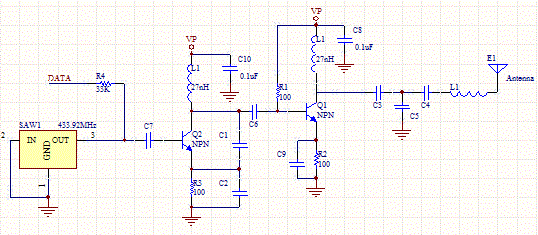
This circuit utilizes a sawtooth oscillator along with an output amplifier that drives a transistor. The components C1, C2, and L1 are essential for the oscillator's operation, forming a tank circuit that must be tuned to the resonant frequency. Generally, the capacitance of C1 is less than that of C2. Additionally, the output capacitor and inductor network is designed to match the antenna to the driver.
The circuit comprises several key elements that work together to produce a stable output frequency. The sawtooth oscillator generates a waveform that is characterized by a linear rise and a sudden drop, which is ideal for applications requiring precise timing signals. The oscillator's frequency is primarily determined by the values of C1, C2, and L1, where the inductance of L1 and the capacitance of C1 and C2 create a resonant tank circuit.
In this configuration, C1 is typically chosen to have a smaller capacitance compared to C2, allowing for fine-tuning of the oscillator frequency. The combination of these capacitors with the inductor L1 ensures that the circuit resonates at the desired frequency, which is crucial for maintaining the stability and efficiency of the oscillator.
The output amplifier is responsible for boosting the signal generated by the oscillator, driving a transistor that further amplifies the output to a level suitable for transmission. This transistor acts as a switch, allowing the oscillator's output to control larger currents necessary for driving an antenna.
The output network, consisting of an additional capacitor and inductor, serves a dual purpose. It not only matches the impedance of the antenna to the output of the amplifier but also filters harmonics that may be present in the output signal, ensuring that the transmitted signal is clean and within the desired frequency band. Proper impedance matching is critical in maximizing power transfer and minimizing signal reflections.
Overall, this circuit is designed for applications in radio frequency transmission, where precise control over frequency and signal integrity is paramount. The careful selection and arrangement of components ensure that the circuit operates efficiently and reliably, making it suitable for various communication systems.This circuit uses a saw based oscillator with an output amplifier which drives a transistor. C1 and C2 and L1 are critical oscillator components. They form a tank circuit which should be tuned to the resonator frequency. Typically C1🔗 External reference
The circuit comprises several key elements that work together to produce a stable output frequency. The sawtooth oscillator generates a waveform that is characterized by a linear rise and a sudden drop, which is ideal for applications requiring precise timing signals. The oscillator's frequency is primarily determined by the values of C1, C2, and L1, where the inductance of L1 and the capacitance of C1 and C2 create a resonant tank circuit.
In this configuration, C1 is typically chosen to have a smaller capacitance compared to C2, allowing for fine-tuning of the oscillator frequency. The combination of these capacitors with the inductor L1 ensures that the circuit resonates at the desired frequency, which is crucial for maintaining the stability and efficiency of the oscillator.
The output amplifier is responsible for boosting the signal generated by the oscillator, driving a transistor that further amplifies the output to a level suitable for transmission. This transistor acts as a switch, allowing the oscillator's output to control larger currents necessary for driving an antenna.
The output network, consisting of an additional capacitor and inductor, serves a dual purpose. It not only matches the impedance of the antenna to the output of the amplifier but also filters harmonics that may be present in the output signal, ensuring that the transmitted signal is clean and within the desired frequency band. Proper impedance matching is critical in maximizing power transfer and minimizing signal reflections.
Overall, this circuit is designed for applications in radio frequency transmission, where precise control over frequency and signal integrity is paramount. The careful selection and arrangement of components ensure that the circuit operates efficiently and reliably, making it suitable for various communication systems.This circuit uses a saw based oscillator with an output amplifier which drives a transistor. C1 and C2 and L1 are critical oscillator components. They form a tank circuit which should be tuned to the resonator frequency. Typically C1
